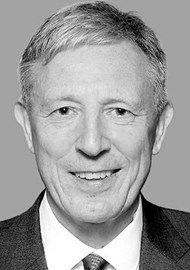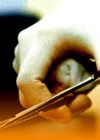I have made a breakthrough. I have now determined the voice of the book. The target audience will be students of The Law and of Medicine. I am addressing one small interface of these two great professional worlds, the current gross negligence manslaughter charge involving healthcare professional. The approach will be pragmatic and empiric. I will go into detail of the medical issues for the students of the law, and I will raise issues of principles, ethics, professionalism, and the morals of justice for the medical students. The cases involved were absolute disasters. Each could be the basis of a complete overhaul of the principles of justice and the practice of medicine.
Of course, the problem lies in the system(s) and change, as is required, needs to be a long game strategy. That is why I am not advocating for the impossible. I am presenting the issues for the next generation to start thinking about now. Before it is too late, and they have become part of the system.
Having shared that bit of positive news, let me do the quickest summing up of the rest of the blogs. It is not easy to read them again. The Judge was out of her depth. The emotive language she used in her reasons for sentencing, it was unprofessional. She lacks confidence, and was adamant that my comments on “Duty of Care”, a different moral and ethical concept in Medicine and the Law. A thinker in her courtroom? No. One insight I shared related to cultural differences both in the law and in medicine, but also in the way they are practiced in the East and the West.
“It made me realise that Hong Kong is in the East. Bargaining is in the blood. In the first report you should give nothing away. “Full disclosure” is a legal game of chicken, not, an ethical principle. The law is full of games. Discovery?”
What was particularly irritating was the Judge’s repetition of words, terminology and context which showed without any question that she was repeating what others had said but did not understand it. Language is so important, and inconsistencies greatly weaken the power of words.
The Judge confuses a conditional expectation and a certainty. She refers to, but does not describe “optimisation”. In part 17, I introduce the concept of deductive truth and its relevance to what we do not know and yet claim we do. The issue was whether Dr Kwan willingly and knowingly left an unconscious patient without medical supervision in the recovery room after a three-hour surgical procedure performed under sedation. The Judge says that Dr Kwan knew. The deductive truth is that she did not know.
““…when she knew …” sadly there is no proof that she knew the state of consciousness of the patient, the evidence strongly suggests that she did not know the state of consciousness of the patient. How can I say such a thing? It is related to measurements. The measurements we make and the deductions we can draw from them. How do we measure the state of consciousness of a patient? Dr Mainland, the Australian Medical Expert declared that she assessed levels of consciousness by the response of the patient using different levels of stimulation. A great problem with this is the essentially subjective nature of the assessment. This is why a far superior technique is available and that is a device that can collect and analyse real time brain function and relate that, objectively, to levels of consciousness. The deductive truth must be that “ ...she did not know…””
Part 18 and 19, Judge fails, system fails, profession fails. Are doctors born or made? Made of course. So, who makes them? Older doctors, and if something goes wrong and a doctor is involved in an unexpected death, do we investigate the individual doctor or the system and the context in which the death occurred? Again, I highlight the censoring of my original report. It was unnecessary and petty.
In parts 20 and 21, aspects of jurisprudence are discussed. In particular, the nature of indictments that have no basis in law. Again, I quote: “When it was pointed out that there was no legal basis for a) and c) above, the legal games began and rather than accepting the fallacy of the charges, the prosecution doubled down and expanded the indictment by extracting specific parts of the guidelines as evidence of failure of duty of care.”
Followed up by this observation:
“What I found particularly disturbing is that the Court was informed, without any equivocation, that the guidelines had no statutory significance. This was not a case of factual evidence leading to a conviction of guilt: it was the case of a highly unethical “expert”, making false claims, on the basis of guidelines that were created by an understandably biased group for political purposes. That is not how the Law should function.
Clinical Practice Guidelines must be informed by Evidence-Based Medicine. That is their strength but also a limitation. What can be said is that in Hong Kong, in 2014, there were no enforceable guidelines related to procedural sedation. Hong Kong needs such guidelines, but they need to be properly formulated; consensus, guidelines followed by all stakeholders.”
The postings finished with a few specific topics; the prone position, the forensic significance of snoring, timelines, prescribing habits and finally: time out. A rethink on propofol.
Wow. I am done. Time for lunch. I think I am going to make an omelette. You know the saying: “You cannot make an omelette without breaking the eggs.” I see this as a warning and a reassurance that although I will be subject to some pretty passionate resistance as I move forwards, the end will be worth it. The seeds will be sown in the leaders of the future.








